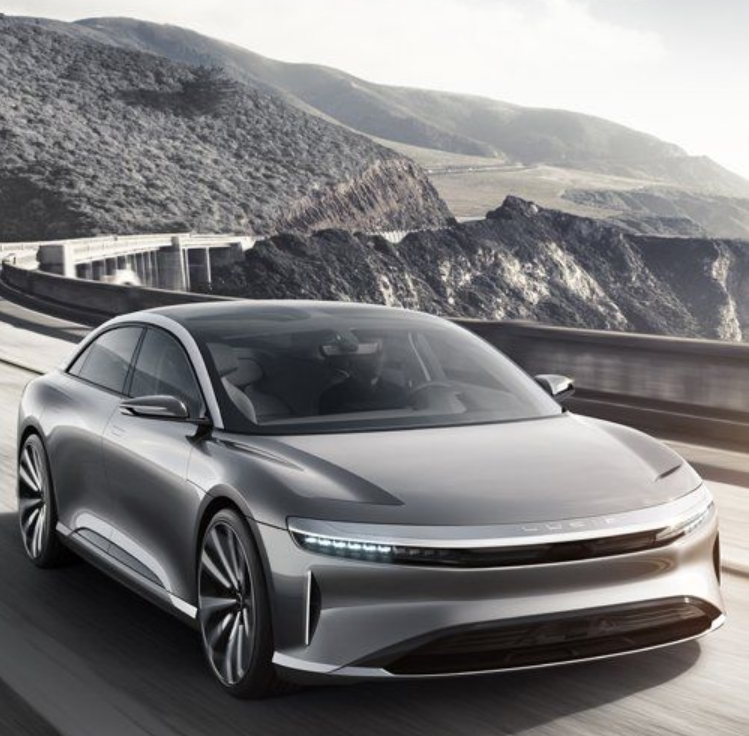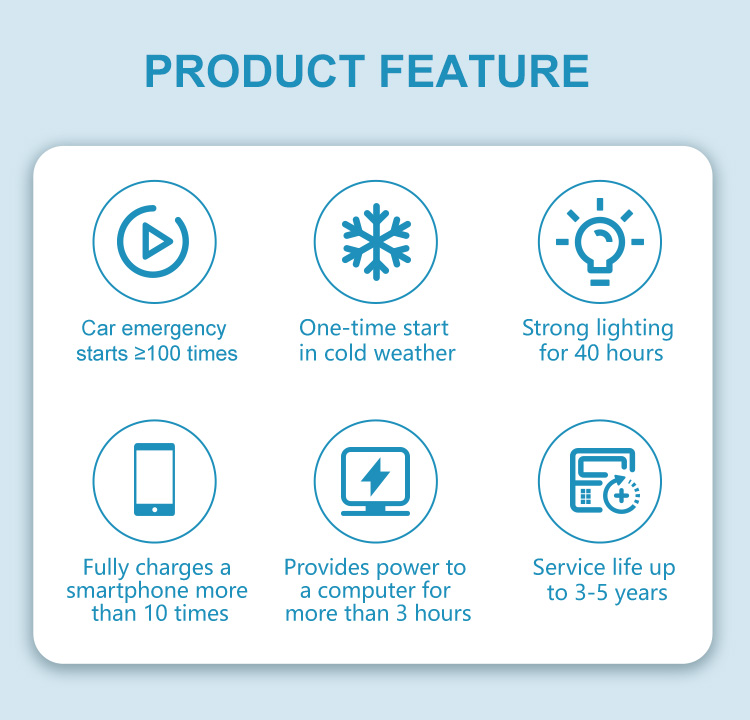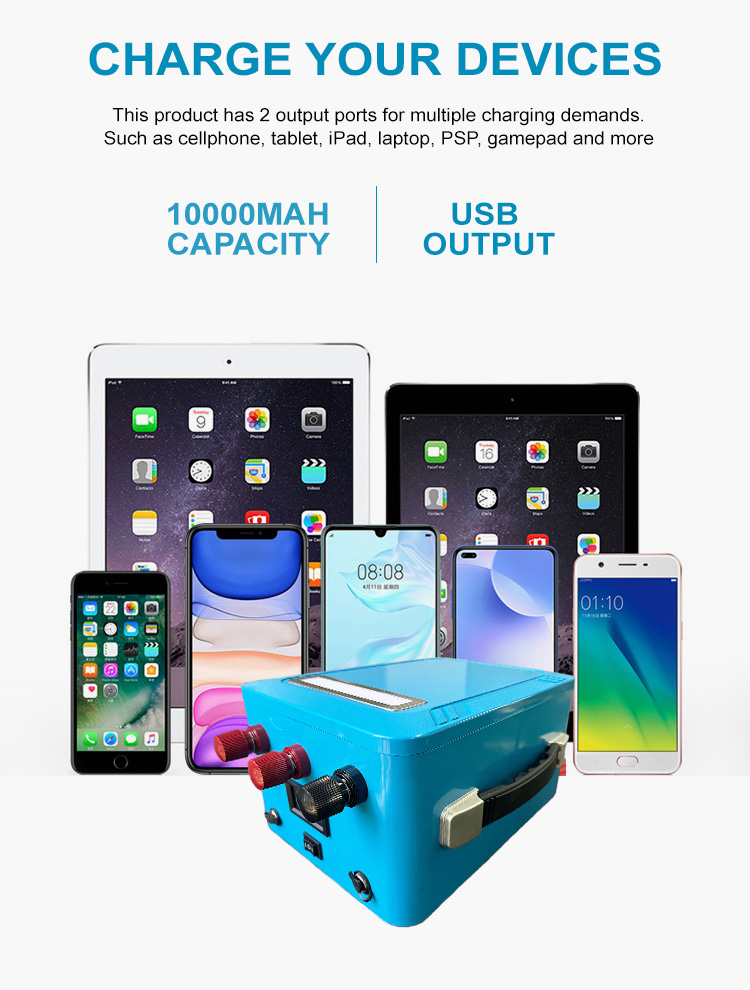How to Choose a Car Jump Starter Power Supply?
The Working Principle of Car Jump Starter Power Supplies
Car jump starter power supplies primarily store electrical energy in internal batteries. When a vehicle's battery encounters issues, these power supplies can rapidly release a large current to assist in starting the engine. Their core technology lies in providing instantaneous high current output, making engine starting possible. Common jump starter power supplies come in two types: lithium-ion batteries and lead-acid batteries.
Key Factors in Choosing a Car Jump Starter Power Supply
Battery Capacity
Battery capacity is usually expressed in milliampere-hours (mAh) or ampere-hours (Ah). The larger the capacity, the more electrical energy the jump starter can store, enabling it to support more starts. Generally, for small household cars, jump starters with capacities ranging from 8000mAh to 15000mAh are sufficient, while for large SUVs or commercial vehicles, products with capacities of 20000mAh or higher are recommended.
Starting Current
Starting current is a crucial performance metric for jump starters, typically measured in amperes (A). The higher the starting current, the greater the probability of successful starting. In general:
Small cars: It is advisable to choose jump starters with starting currents between 200A to 400A.
Midsize cars and SUVs: Opt for starting currents between 400A to 600A.
Large SUVs and diesel vehicles: Choose starting currents of 600A to 1000A or higher.
Ensuring that the jump starter can provide sufficient starting current is essential to meet the engine's instantaneous high current demands.
Battery Type
Currently, there are two main types of batteries used in jump starter power supplies:
Lithium-ion batteries: Small in size, lightweight, with high discharge efficiency, suitable for household cars. However, they have poor high-temperature resistance and relatively shorter lifespans.
Lead-acid batteries: Low cost, durable, stable performance, ideal for commercial vehicles. They are heavy, have slow charging speeds, and provide stable performance.
When choosing a battery type, consider your usage environment and requirements. Lithium-ion batteries are recommended for daily household use, while lead-acid batteries are suitable for prolonged outdoor or extreme environmental use.
Safety Features
Safety features are essential considerations when purchasing jump starter power supplies. A good jump starter should have the following safety features:
Short-circuit protection: Prevents malfunctions causedby battery short circuits.
Overcharge protection: Prevents battery damage from excessive charging.
Over-discharge protection: Prevents battery damage from excessive discharging.
Reverse connection protection: Prevents damage from polarity reversal.
Temperature protection: Ensures stable performance in high or low temperature environments.
Choosing products with comprehensive safety features can effectively reduce risks during use.
Additional Features
Some high-end jump starters come with various additional features, such as:
Multi-functional interfaces: Such as USB ports for charging phones, tablets, and other devices.
LED lights: Providing illumination for nighttime use.
Air pump function: Some products include air pumps for inflating tires.
Built-in inverter: Provides power for laptops and other electronic devices.
Different Types of Car Jump Starter Power Supplies
Traditional High Current Jump Starters
These jump starters are typically large and are mainly used for commercial vehicles and large SUVs. They have very high starting currents, usually above 1000A, effectively meeting the starting requirements of high-displacement engines.
Portable Jump Starters
Portable jump starters are currently the most popular choice on the market. They are compact, lightweight, and easy to carry. Most products have USB charging capabilities and LED lights, suitable for household and travel use.
Multi-functional Integrated Jump Starters
These jump starters not only have starting functions but also integrate features like air pumps, inverters, etc., making them great companions for outdoor travel. However, these products are larger in size, more expensive, and are suitable for users needing multiple functions.
Usage Precautions
Regular charging: Even if jump starters are not used frequently, they should be charged every three months to maintain battery activity.
Proper connection: Ensure correct polarity connection of the jumper clamps to avoid damaging the battery or car's electronic systems.
Storage environment: Avoid storing jump starters in extreme temperature conditions, especially in high heat or cold weather.
Safety checks: Regularly inspect the jump starter's interfaces, cables, and battery status to ensure there is no damage or aging.
A car jump starter power supply is an essential tool for every vehicle owner, providing reliable electrical support in emergencies. By considering factors like battery capacity, starting current, battery type, safety features, and additional functions, car owners can find the most suitable product based on their actual needs.
For more industry and product information, please contact us:
WhatsAPP/Tel: +86-18100835727
Email: support@voltupbattery.com
Post time: Aug-08-2024










